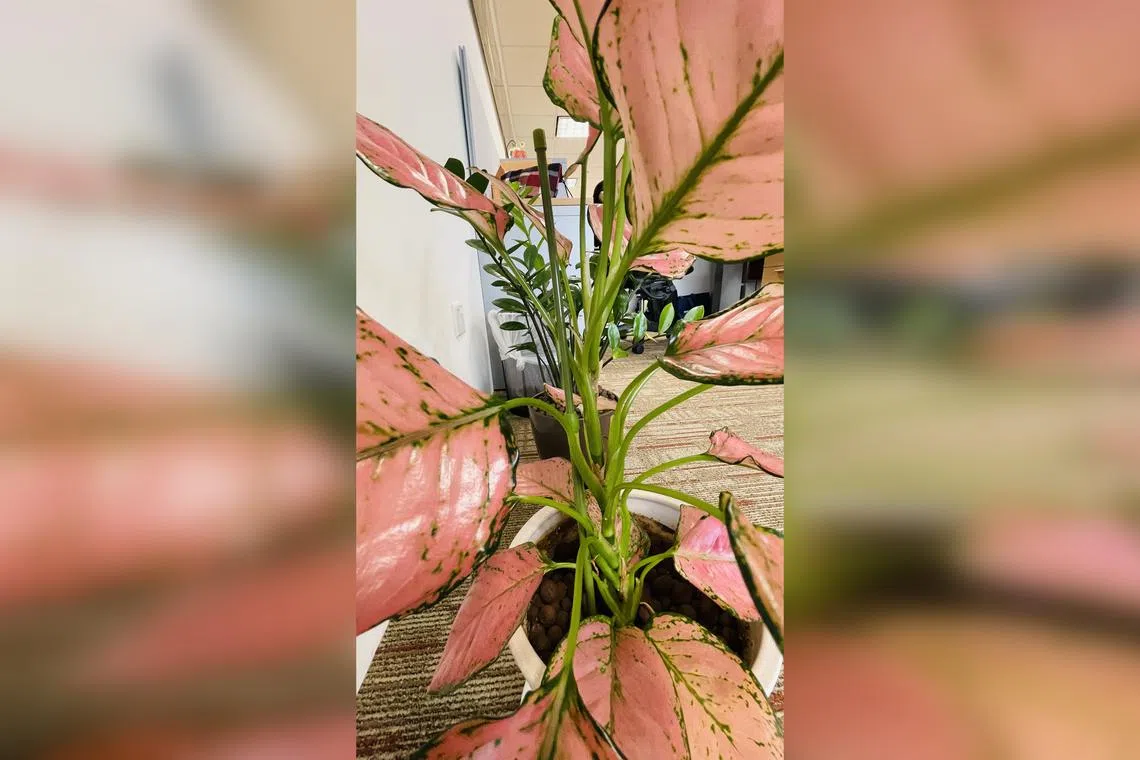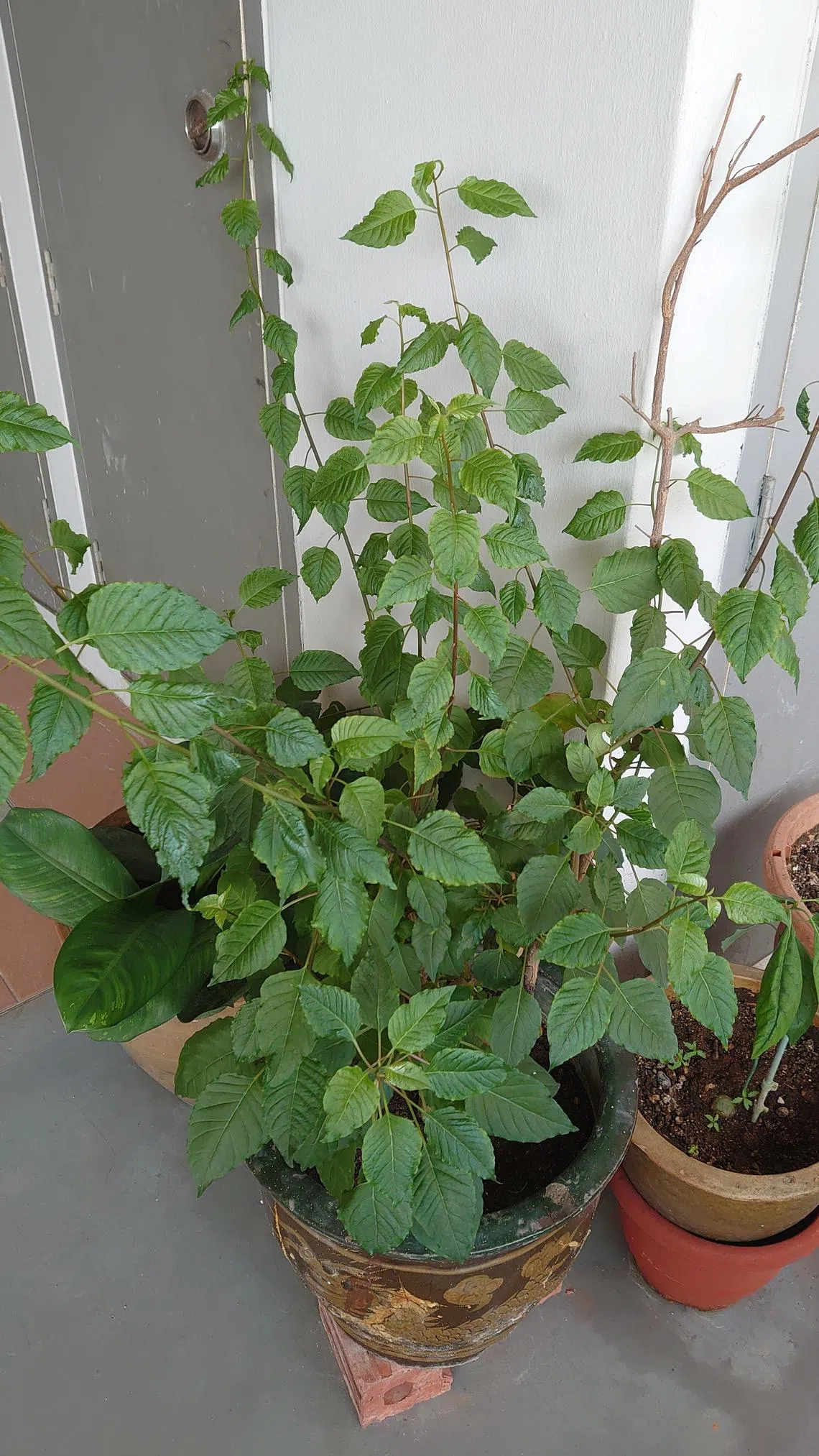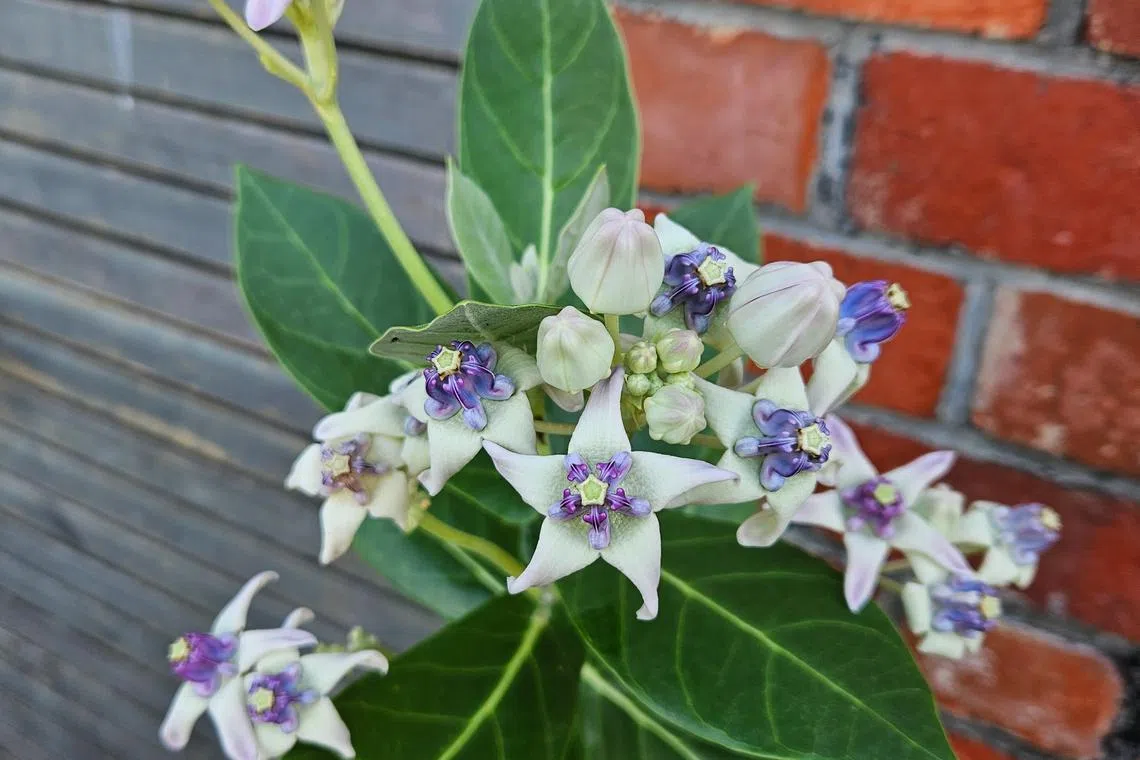Root Awakening: Let Aglaonema cuttings take root in a cool, shady spot
Sign up now: Get ST's newsletters delivered to your inbox

The top part of the existing Aglaonema plant can be pruned if the plant gets too tall and lanky.
PHOTO: STEPHANIE TOCK
Follow topic:
Prune Aglaonema for a bushier growth habit
My plant started with a small pot and has since grown taller, and I repotted it into a bigger container. The stem is not strong enough to hold the plant upright, so I inserted a stick to provide it with support. Do I need to repot or prune the plant, or leave it as it is? It is still growing beautifully.
Stephanie Tock
The plant is a cultivar of the Aglaonema. The top part of the existing plant can be pruned if the plant gets too tall and lanky. Make sure the remaining lower part has nodes for new shoots to grow. These side shoots will eventually give rise to a more attractive, bushier growth habit.
When pruning the top part of the plant, ensure the stem cutting contains several nodes. This can be potted in some moist sphagnum moss.
Ensure that you do not overly compact the sphagnum moss. Leave the cutting to root in a cool, shaded location. You may need to keep the cutting in a clear plastic enclosure to conserve moisture and reduce the likelihood of it wilting.
Once sufficient roots have formed, you can pot the cutting in an aerated and moisture-retentive mix.
Medicinal shrub is Bohemian Knotweed

This plant is a hybrid of plants of the Fallopia genus.
PHOTO: QUEK HONG CHEANG
What is this plant? I have heard it called “Seven Leaves” in Teochew and it is said to be able to treat stomach gas, but I am not sure.
Quek Hong Cheang
This plant is known by the common name Bohemian Knotweed. Its botanical name is Fallopia x bohemica, which is a hybrid of Fallopia japonica and Fallopia sachalinensis. Its medicinal properties are not well studied, but it could contain similar bioactive compounds to those found in the Fallopia genus.
Plants are common weeds

These plants’ yellow leaves indicate that they lack nutrients and water.
PHOTOS: ANGELIN WONG
What are these plants and are they edible?
Angelin Wong
The plants are common weeds that occur in flower pots and outdoor garden beds. Their yellow leaves indicate that they lack nutrients and water.
They are said to possess medicinal properties, but consult a trained practitioner before using them in any treatment.
The plant on the left is Coleus monostachyus, commonly known as Monkey’s Potato. Its leaves can be cooked and eaten.
The plant in the middle is commonly known as Shiny Bush or Pepper Elder. Its botanical name is Peperomia pellucida. This weed is also edible, and the tender shoots and leaves can be added to salads.
The plant on the right could be Phyllanthus amarus due to the greenish fruits and stems. Its common names include Child Pick-A-Back, Gale Of Wind and Carry Me Seed. It is mainly used as a medicinal plant.
Kangkong likely infested with whiteflies

Whiteflies are sap-sucking pests that are difficult to eradicate.
PHOTO: PATRICIA LIM
My kangkong has white spots on its leaves. What is wrong? Is it still edible?
Patricia Lim
The white spots indicate that your plant has been infested with whiteflies, a type of sap-sucking pest that is difficult to eradicate. To get rid of them, use pesticides such as pyrethrins, rotated with white summer oil, to suffocate the insects.
If pesticide has not been applied, the infested leaves and shoots will be edible after washing the pests away. If you do spray the plant with pesticide, you will have to observe the withholding period – that is, the time which must elapse after pesticide application – and wash the harvest thoroughly with water.
Giant Milkweed can be grown from seeds

This plant is a host to the caterpillars of the Plain Tiger and Common Crow butterflies.
PHOTO: TOH EE LOONG
I saw this plant growing between the walls of two houses. What is it and is it available in commercial nurseries?
Toh Ee Loong
This plant is the Crown Flower or Giant Milkweed, and its botanical name is Calotropis gigantea. There is another cultivar with white flowers.
The plant is a host to the caterpillars of the Plain Tiger and Common Crow butterflies. As it grows, you can collect seeds from the fruit produced. This plant may occasionally be available for sale in larger retail nurseries.
Answers by Dr Wilson Wong, an NParks-certified practising horticulturist and parks manager. He is the founder of Green Culture Singapore and an adjunct assistant professor (Food Science & Technology) at the National University of Singapore.
Have a gardening query? E-mail it with clear, high-resolution pictures of at least 1MB, if any, and your full name to . We reserve the right to edit and reject questions.

